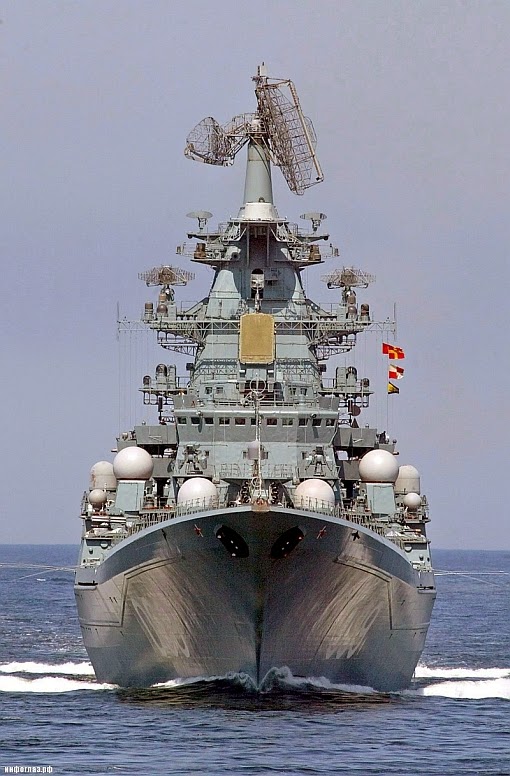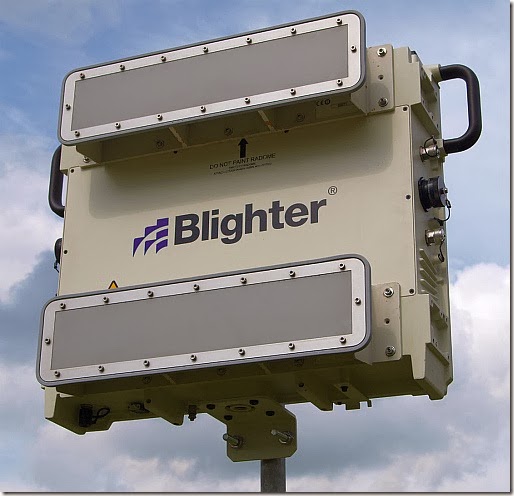Thanks to DEW, which scattered 58 different early detection systems across northern Canada, it became necessary to develop a reliable way to communicate with each site. This was White Alice, a communications network that used tropospheric scatter and microwave relay to link the far north.
Review of Radar Science, Technology, Applications, News, Publications, Industry, History, etc.
Monday, March 31, 2014
Friday, March 28, 2014
Wednesday, March 26, 2014
New Threats, New Technologies Push New USAF Radar Program
WASHINGTON — For years, the AN/TPS-75 has been the US Air Force’s “grab and go” radar system. Get it into an operational field, set it up, and it provides wide-range coverage of what is going on in the skies.
But like so much of the service’s technology, the TPS-75 needs revitalization. The threat environment has changed, and new technologies could render the radar “incapable of detecting some current and emerging threats,” according to service budget documents.
Enter the Three Dimensional Expeditionary Long Range Radar (3DELRR) program. The service plans to replace the TPS-75 with 3DELRR toward the end of the decade, assuming the budget holds.
In the Pentagon’s fiscal 2014 budget request, the service asked for $70.1 million in research, development, test and evaluation funds for the radar program, a figure Congress knocked down to $54.1 million in the National Defense Authorization Act.
For fiscal 2015, the Air Force has again sought an increase, this time to $88.8 million. That request rises to $98.2 million in fiscal 2016, and then drops to $68.6 million in fiscal 2017, $24.7 million in fiscal 2018 and $35.7 million in fiscal 2019.
A timeline included in the budget notes a goal to get 3DELRR out for initial deployment by fiscal 2020, which may explain why those figures drop over time; as the program gets closer to procurement, the need for research funding slows down. Low-rate initial production is scheduled to begin by early fiscal 2018.
Третий серийный А-50У для ВВС РФ
МОСКВА, 25 марта. (АРМС-ТАСС). ВВС России приняли сегодня на вооружение третий серийный модернизированный самолет дальнего радиолокационного обнаружения и управления (ДРЛОиУ) А-50У. Об этом сообщил ИТАР-ТАСС представитель Минобороны по ВВС полковник Игорь Климов.
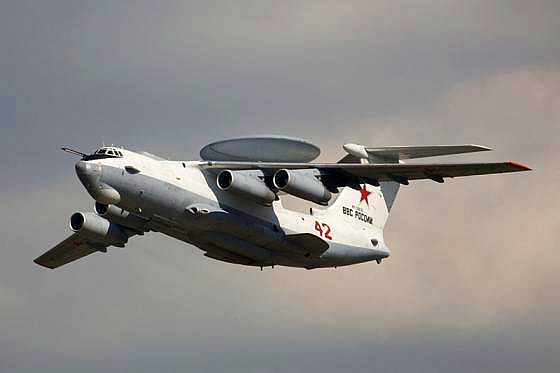
"Самолет А-50У был передан сегодня на заводском аэродроме Таганрогского авиационного научно-технического комплекса им.Г.М.Бериева, входящего в Объединенную авиастроительную корпорацию. Самолет принят экипажем ВВС и совершит перелет из Таганрога к месту своего постоянного базировани", - рассказал он.
Представитель ВВС отметил, что кроме бортового номера эта машина получила собственное имя - "Сергей Атаянц", в честь Сергея Аванесовича Атаянца - авиаконструктора. непосредственно руководившего созданием авиационного комплекса А-50.
Самолет ДРЛОиУ А-50У предназначен для обнаружения воздушных и надводных целей, наведения экипажа истребителя на цели, передачи сигналов радиолокационной станции (обнаружения воздушных целей различных типов, в том числе, вертолетов, крылатых ракет, сверхзвуковых летательных аппаратов) на наземные пункты управления. Основа А-50У - мощный и современный радиолокационный комплекс "РМ". Самолет А-50 стоит в ряду лучших мировых аналогов по насыщенности сложным радиоэлектронным оборудованием, мощными системами электроснабжения.
Права на данный материал принадлежат АРМС-ТАСС
Материал был размещен правообладателем в открытом доступе.
Monday, March 24, 2014
Thursday, March 20, 2014
Poland considers MEADS anti-missile radar
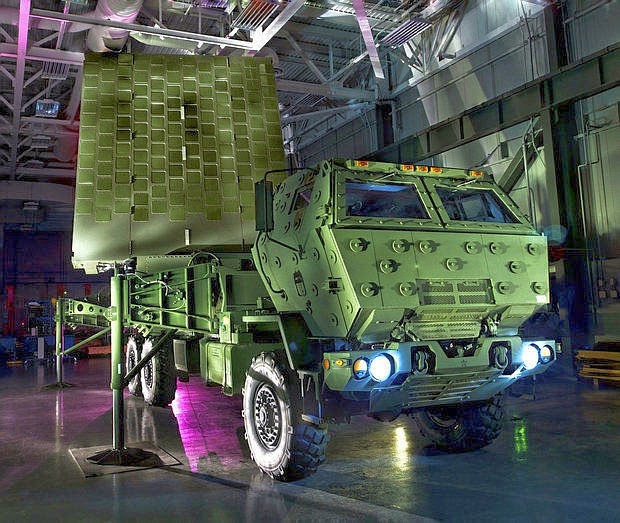
WASHINGTON -- A missile defense system the United States has no plans to deploy may find new life in Poland, where leaders Tuesday welcomed Vice President Joe Biden amid rising tensions over Russia's takeover of Crimea.
As Biden visited with President Bronislaw Komorowski in Warsaw, other Polish leaders met privately Tuesday with executives from MEADS International, the consortium developing the Medium Extended Air Defense System.
Poland selected MEADS International, and its main U.S. partner -- Lockheed Martin Corp. -- as one of four finalists for a contract worth up to $5 billion to modernize its air and missile defense systems.
If MEADS wins the competition, it would help boost business at Lockheed Martin in Salina, which developed the 360-degree search radar for the anti-missile system.
The other finalists for the Polish contract are a French consortium that includes Thales and MBDA, the Israeli government, and Massachusetts-based Raytheon, developer of the Patriot anti-missile system.
Wednesday, March 19, 2014
New USAF Radar Program
WASHINGTON — For years, the AN/TPS-75 has been the US Air Force’s “grab and go” radar system. Get it into an operational field, set it up, and it provides wide-range coverage of what is going on in the skies.
But like so much of the service’s technology, the TPS-75 needs revitalization. The threat environment has changed, and new technologies could render the radar “incapable of detecting some current and emerging threats,” according to service budget documents.
Enter the Three Dimensional Expeditionary Long Range Radar (3DELRR) program. The service plans to replace the TPS-75 with 3DELRR toward the end of the decade, assuming the budget holds.
In the Pentagon’s fiscal 2014 budget request, the service asked for $70.1 million in research, development, test and evaluation funds for the radar program, a figure Congress knocked down to $54.1 million in the National Defense Authorization Act.
For fiscal 2015, the Air Force has again sought an increase, this time to $88.8 million. That request rises to $98.2 million in fiscal 2016, and then drops to $68.6 million in fiscal 2017, $24.7 million in fiscal 2018 and $35.7 million in fiscal 2019.
Lockheed Martin and Rowan University Partner on Radar Technology
Lockheed Martin and Rowan University are kicking off an innovative, strategic partnership to develop new technologies for a broad range of radar system applications in support of national defense. As threats to the United States become increasingly more complex, this next generation of radar technology is critical to protecting national assets and requires the dedication of an educated workforce.
Lockheed Martin and the University, which have collaborated on projects as part of the Rowan College of Engineering clinic program, are working together to expand their current partnership to conduct research and develop technology.
Research activities will be conducted at the South Jersey Technology Park at Rowan University in Mantua Township, N.J., about a mile from Rowan’s main campus in Glassboro. As research activities expand in scope, these activities will be accommodated at the planned second building at the Technology Park, which opened its first structure—the Samuel H. Jones Innovation Center—in 2008. The Innovation Center, at the juncture of Routes 55 and 322, is home to 16 sponsored College of Engineering research labs, among other offices.
Tuesday, March 18, 2014
Advances in Electronic Warfare Fly Under the Public’s Radar
Vital to U.S. strategic success in cybersecurity is the high-dollar investment in radar-jamming technology and other electronic warfare.
As the Pentagon moves beyond the relatively low-tech wars in the Middle East and turns its attention to future national security challenges, it has doubled down on sophisticated new radar-jamming devices that aim to render adversaries’ air defenses useless.
Although the U.S. faced limited resistance in the skies above Iraq and Afghanistan, that would not be the case in Asia, where the Obama administration plans to shift its diplomatic focus and strengthen its defense strategy in the coming decade.

China and North Korea, for example, have quietly invested in advanced sophisticated radar systems, surface-to-air missile batteries and power-projection capabilities.
So when the Pentagon revealed its fiscal 2015 budget proposal two weeks ago, much of the attention was given to a boost in spending on drones and cybersecurity. Less heralded, but vital to U.S. strategic success, experts say, was the high-dollar investment in radar-jamming technology and other electronic warfare.
Much of this shadowy world is top secret, but the military’s goal is to have complete control over the range of wireless frequencies at the heart of all aspects of war: satellites, radio and radar.
Monday, March 17, 2014
International Radar Symposium IRS-2014 will be held in Gdansk, Poland -- June 16-18, 2014
Dear colleagues and members of the radar community,
According to complicated political situation in Ukraine, the Organising Committee of the International Radar Symposium IRS-2014 has made the final decision to relocate the IRS -2014 to Poland.
Please follow all important changes on the IRS website http://irs2014.lp.edu.ua/
NEW LOCATION: Gdansk, Poland
NEW DATES: June 16-18, 2014
The Symposium will start 2 days earlier than planned before!
NEW ABSTRACT/PAPER SUBMISSION DEADLINE: March 30, 2014
Extended abstracts/draft papers can be uploaded online
http://irs2014.dmcs.p.lodz.pl/irs2014/login/auth
Additional detailed information will be available within the next days.
The IRS-2014 attendees who need to apply for a visa to come to Poland, please contact the polish organisers via the emails:
Prof. Krzysztof Kulpa kulpa@ise.pw.edu.pl
Anna Kurowska a.kurowska@elka.pw.edu.pl
The Ukrainian participants who need a support to attend the IRS-2014, please contact Prof. Felix Yanovsky by email yanovsky@nau.edu.ua
We look forward to seeing you in a beautiful city of Gdansk in June.
Best regards,
Prof. Dr. Hermann Rohling, IRS-2014 Chairman
Dr. Anna Dzvonkovskaya, IRS-2014 Technical Committee Member
Sunday, March 16, 2014
Air Force Updates F-15 Fleet’s Radars, Sensors
The Air Force is in the early phases of a fleet-wide technological upgrade to the F-15 fighter jet to keep it in the air through 2035 and beyond, service officials said.
The upgrades include new radar, electronic warfare gear and computer systems for the F-15 C/D variants and the F-15E dual-role fighter, said Lt. Col. William Ottati, F-15 Program Element Monitor.
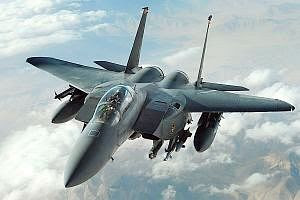 The F-15 C/D fighter planes, which first emerged in the mid-70s, are primarily engineered for air-to-air combat and air superiority missions. The F-15E strike eagle aircraft, first produced in the late 1980s, combine air-to-air attack technology with ground-strike mission ability.
The F-15 C/D fighter planes, which first emerged in the mid-70s, are primarily engineered for air-to-air combat and air superiority missions. The F-15E strike eagle aircraft, first produced in the late 1980s, combine air-to-air attack technology with ground-strike mission ability.
Air Force leaders want to upgrade the fighters with the latest radars, electronics and sensors in order to keep them viable should the U.S. face a more advanced military than Iraq and Afghanistan.
Saturday, March 15, 2014
Iran is going to establish Space-Based Radar System
Iran has accomplished building its Sepehr (Sky) radar with a range of 2500km and hopes to deploy and launch the system in coming months, a senior commander announced on Sunday.
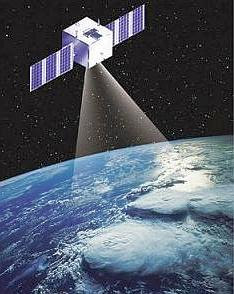 “We hope that we can launch a major part of the Sepehr space radar system by the end of the next (Iranian) year (March 21, 2014-March 20, 2015),” Commander of Khatam ol-Anbia Air Defense Base Brigadier General Farzad Esmayeeli told FNA.
“We hope that we can launch a major part of the Sepehr space radar system by the end of the next (Iranian) year (March 21, 2014-March 20, 2015),” Commander of Khatam ol-Anbia Air Defense Base Brigadier General Farzad Esmayeeli told FNA.
“By launching the Sepehr space radar, we can inform our vessels of remote threats in time and monitor and detect threats before they are put into action, and start our defense in depth and away from our borders,” he added.
Esmayeeli underlined that Iranian engineers and technicians are making strenuous efforts to launch the Sepehr radar system which is seen as a hi-tech product.
In relevant remarks in February 2013, former Iranian Defense Minister Brigadier General Ahmad Vahidi said that Iran planned to develop different types of radar systems with satellite detecting capabilities.
Addressing the second conference on radar technology systems here in Tehran at the time, Vahidi said Iran has witnessed “a jump” in the field of radar designing and manufacturing.
“Today, we have many achievements in different fields. Radars covering ranges of 500km to 700km have been manufactured and production of radar systems with 1,000km to 3,000km of range is underway,” Vahidi explained.
He added that Iran is trying to develop radar systems to detect satellites, and said to do so, the radar systems are connected in phased arrangements to cover very long ranges and detect and track satellites.
Iranian officials have announced that the country has now reached self-sufficiency in producing radar systems in different frequencies and for various ranges.
Thursday, March 13, 2014
New radar technology to free-up radio spectrum
New radar technology could help free up highly sought after radio spectrum currently used for air traffic surveillance.
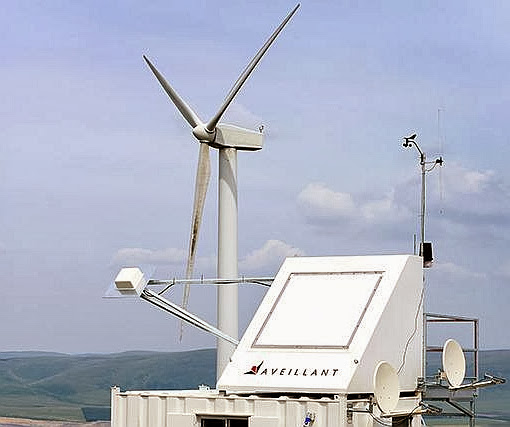
The government has tasked the Civil Aviation Authority (CAA) with investigating options that would allow it to release bandwidth in the current air traffic radar spectrum allocation – in the ‘S Band’ between 2.7 and 2.9 GHz – to help meet its aspiration to free up 500 MHz of public spectrum by 2020.
In response, Cambridge technology firm Aveillant has been awarded a contract by the CAA to demonstrate the ability of its Holographic Radar technology to provide a spectrum-efficient alternative to S-band radar.
At present each radar typically has its own frequency assignment, but Aveillant hopes to demonstrate a surveillance system that can enable all air traffic control radars in the UK to operate through a single frequency assignment, separate from the ‘S Band’.
The firm’s radars use the L band frequency as opposed to the highly congested S band, used by current air traffic control radars and highly sought after by mobile phone operators.
Gordon Oswald, chief technology officer at Aveillant, said: “This is not a simple problem to solve, but based on our experience with Holographic Radar we’re confident that we are best placed to do so.
“Air traffic control radars cannot be simply shifted to another frequency, such as L band: this would then itself become too congested. At the same time, a much higher frequency is less suitable for long-range air traffic control radar due to atmospheric effects.
“This problem is ripe for a solution that changes the way air traffic radars occupy bandwidth. It’s going to be a demanding project to show how this solution will work – but one that we’re well equipped to handle.”
According to the firm, its 3D Holographic Radar is also proven to successfully mitigate the effect of wind farms on radar and has excelled in trials held by US and UK aviation stakeholders.
Monday, March 10, 2014
WegenerNet: A Pioneering High-Resolution Network for Monitoring Weather and Climate
Gottfried Kirchengast, Thomas Kabas, Armin Leuprecht, Christoph Bichler, and Heimo Truhetz, 2014: WegenerNet: A Pioneering High-Resolution Network for Monitoring Weather and Climate. Bull. Amer. Meteor. Soc., 95, 227–242.
doi: http://dx.doi.org/10.1175/BAMS-D-11-00161.1
The Feldbach region in southeast Austria, characteristic for experiencing a rich variety of weather and climate patterns, has been selected as the focus area for a pioneering weather and climate observation network at very high resolution: The WegenerNet comprises 151 meteorological stations measuring temperature, precipitation, and other parameters, in a tightly spaced grid within an area of about 20 km × 15 km centered near the city of Feldbach (46.93°N, 15.90°E). With its stations about every 2 km2, each with 5-min time sampling, the network provides regular measurements since January 2007, after a pilot phase, until 2010, meanwhile in an operational manner. Quality-controlled station time series and gridded field data (spacing 200 m × 200 m) are available in near–real time (data latency less than 1–2 h) for visualization and download via a data portal (www.wegenernet.org; detailed information is available via www.wegcenter.at/wegenernet).
This paper introduces the WegenerNet from its design and setup via its processing system and data products to showing example results. The latter include extreme weather event examples, climate variability over the 5-yr period from 2007 to 2011, and an example of calibration support to coupled climate–hydrology modeling. The network is set to serve as a long-term monitoring and validation facility for weather and climate research and applications. Uses include validation of nonhydrostatic models operated at 1-km-scale resolution and of statistical downscaling techniques (in particular for precipitation), validation of weather radar and satellite data, study of orography–climate relationships, and many others.
Sunday, March 9, 2014
Cambridge radar for US homeland security market
A high technology radar from Blighter Surveillance Systems in Cambridge UK is being targeted at the US homeland security and commercial airport markets.
Blighter Surveillance Systems has teamed up with thermal imaging specialist Liteye Systems Inc – which worked on security at the London Olympics – to distribute its radars throughout North America.
Liteye has already sold combined Blighter radar and Aquila PTZ (pan, tilt, zoom) thermal imaging surveillance systems into a number of strategic sites in North America, including Centennial Airport in Colorado.
The partners will promote a complete range of Blighter ground surveillance radars – including the new Blighter Revolution 360 radar, the long-range Blighter B400 series radars, the vehicle-mobile Blighter B303 radars and the man-portable Blighter B202 Mk 2 radars. The agreement will also include local manufacture and assembly of radars.
NASA could predict sinkholes with space radar
NASA announced Friday that it may have found a way to predict sinkholes up to a month before they occur. The warning would be provided by interferometric synthetic aperture radar (iSAR), which could be placed on satellites or planes to scan areas prone to sinkholes.

iSAR scans the ground several times in several different wavelengths to put together interferograms, which can show small movements of the Earth such as the effect of flooding on riverbanks, the ripples of earthquakes and where the ground is sinking.
Sinkholes are depressions in the ground formed when layers of the earth's surface fall into underground caverns. Usually they form without warning.
Tuesday, March 4, 2014
Airbus Defence and Space naval radars to be showcased at DIMDEX 2014, booth No 435
At DIMDEX 2014, it's the first time that Airbus Defence and Space - a new division within the Airbus Group – is publicly present with all its four business lines at an exhibition in the Middle East region. The division has been formed by combining the business activities of Cassidian, Astrium and Airbus Military. At previous DIMDEX shows just Cassidian was present with its defence and security portfolio.
Airbus Defence and Space is Europe’s number one defence and space enterprise, the second largest space business worldwide and among the top ten global defence enterprises. It employs some 40,000 employees generating revenues of approximately €14 billion per year.
Within this new organisation Airbus Defence and Space is reinforcing its capabilities to service the customers better with a one-stop-shop offering an integrated portfolio based on one sales organisation under one strong brand, continue to build on a strong and reliable partnership with one known face to the customer and present the integrated and innovative product and services portfolio at competitive prices. The new Division started operating at executive level as of 1 January 2014.
Airbus Defence and Space is composed of four business lines: Military Aircraft; Space Systems; Communication, Intelligence & Security (CIS); and Electronics. It brings together a wide portfolio to continue to meet the complex needs of its customers across the world.
Airbus Defence & Space TRS-4D AESA radar will be fitted onboard German Navy's future F125 frigates. Picture: Airbus Defence & Space
The business line Electronics will show a new generation of naval radars with unprecedented capabilities for the surveillance of sea areas and countering asymmetric threats:
TRS-4D is the innovative step from conventional radar into a "new dimension" of operational capability. It enables ships from patrol vessels to frigate size to exert the different detection tasks of a ship-borne medium range surveillance and target acquisition radar, in blue waters and also in complex littorals with high target densities. It performs faster, more accurate and against a wider scope of targets than conventional radars. TRS-4D provides navies and coast guards with the benefits of solid-state based AESA technology, which up to now has been available to highly expensive systems only. A non-rotating variant with four fixed array panels is under production for the new F125 frigates of the German Navy.
Airbus Defence & Space TRSS (Tactical Radar for Surface Surveillance).
Picture: Airbus Defence & Space
Also on display is TRSS (= Tactical Radar for Surface Surveillance), a new naval X-Band radar optimized for the detection of extremely small objects and countering asymmetric threats. Based upon the latest AESA radar technology (AESA = Active Electronically Scanning Array), TRSS substantially increases the detection capabilities, and thus the protection level of navy ships and coast guard vessels. TRSS is able to detect and distinguish small objects precisely at close ranges, e.g. individual swimmers. These features give ship operators an optimal overview of the situation, e.g. against terrorist attacks, and enable ships to monitor movements on land.
Civil Aviation Authority trials Cambridge radar
The UK’s Civil Aviation Authority (CAA) is using novel radar technology from Cambridge business, Aveillant.
 It has awarded a contract to the company to demonstrate the ability of its Holographic RadarTM technology to provide a spectrum-efficient alternative to S-band primary air traffic surveillance radar.
It has awarded a contract to the company to demonstrate the ability of its Holographic RadarTM technology to provide a spectrum-efficient alternative to S-band primary air traffic surveillance radar.
The UK government aspires to release 500 MHz of public spectrum by 2020 and has tasked the CAA with investigating the viability of options to release bandwidth in the current air traffic radar spectrum allocation in the ‘S Band’ between 2.7 and 2.9 GHz.
The CAA is investigating two options: to change and reduce the spectrum occupied by existing aerodrome radars, and to exploit new, spectrum efficient solutions that have potential to provide additional benefits to aviation.
Saturday, March 1, 2014
Radar technology a potential export earner as it gives Navy a battle edge
HMAS Perth returns to Garden Island after being fitted with
the new Phased Array RADAR System. Photo: Royal Australian Navy
Most modern radars really do work like the ones in the movies: they spin around, creating the familiar green line moving around a circle like a clock hand in fast-forward.
The problem with such radar for self-defence systems – shooting down incoming missiles – is the system can only check a particular direction every few seconds as the radar swings around.
With the fearsome weaponry carried on modern warships, every second counts in a fight – future sea battles might not last very long.
